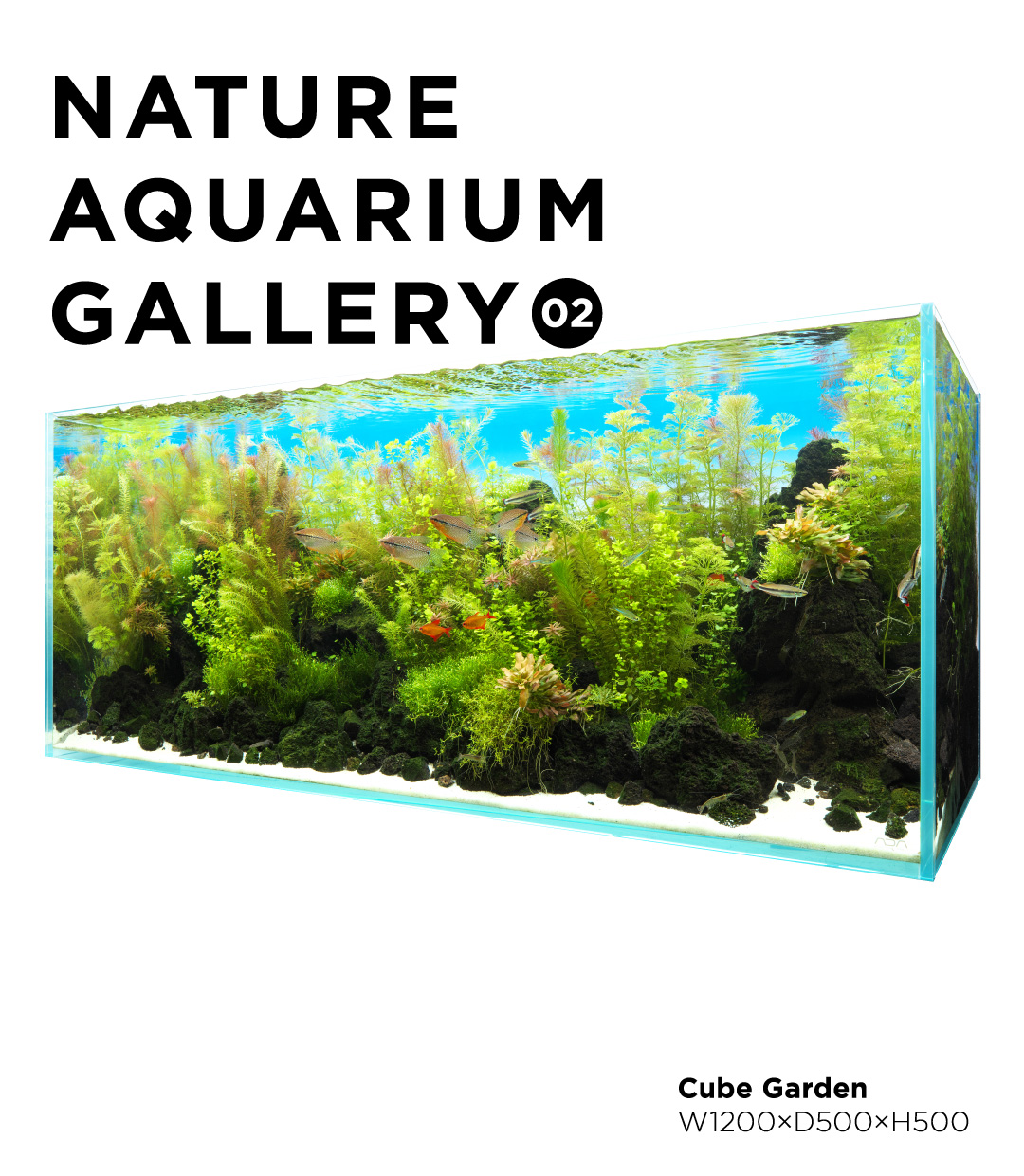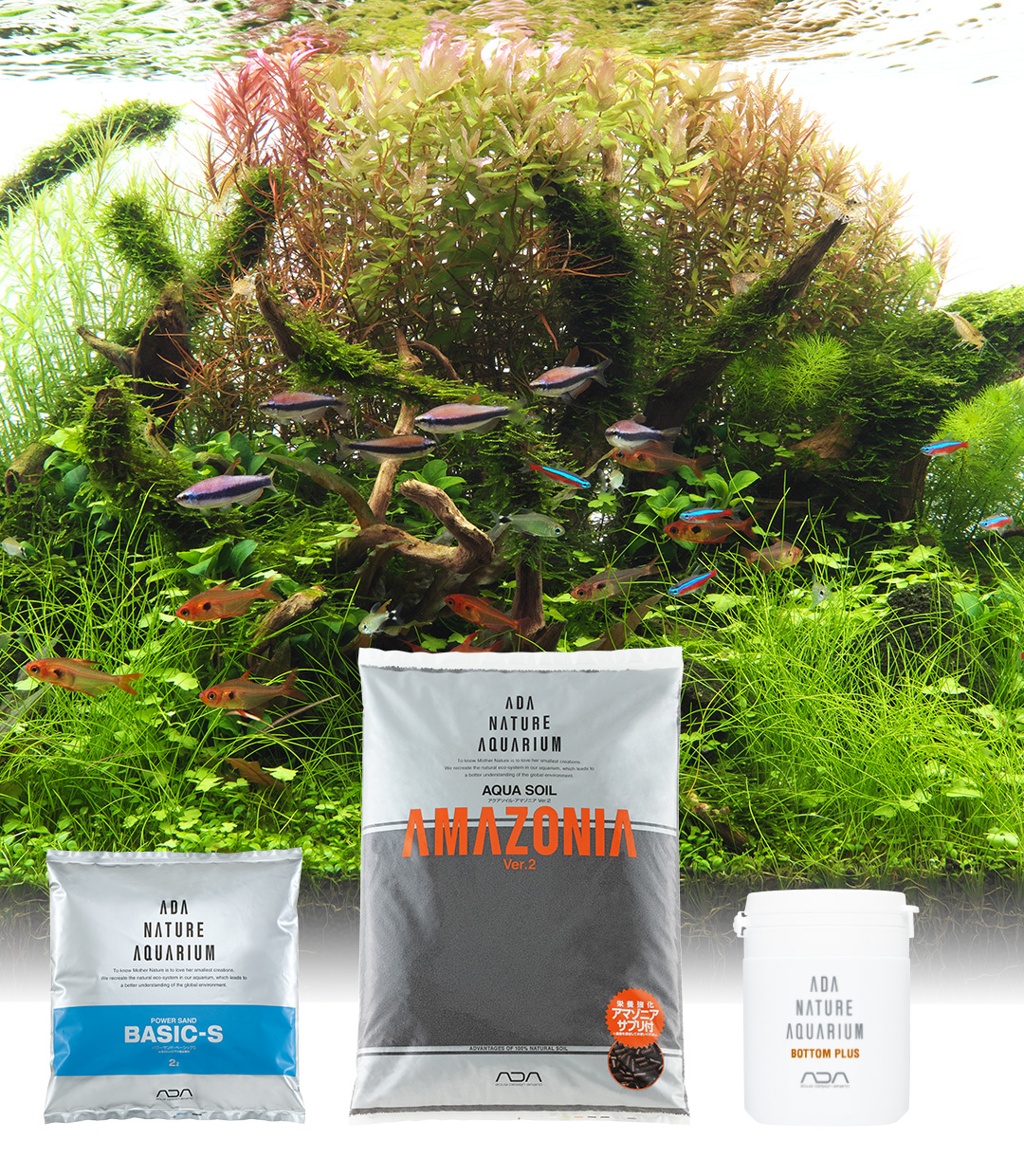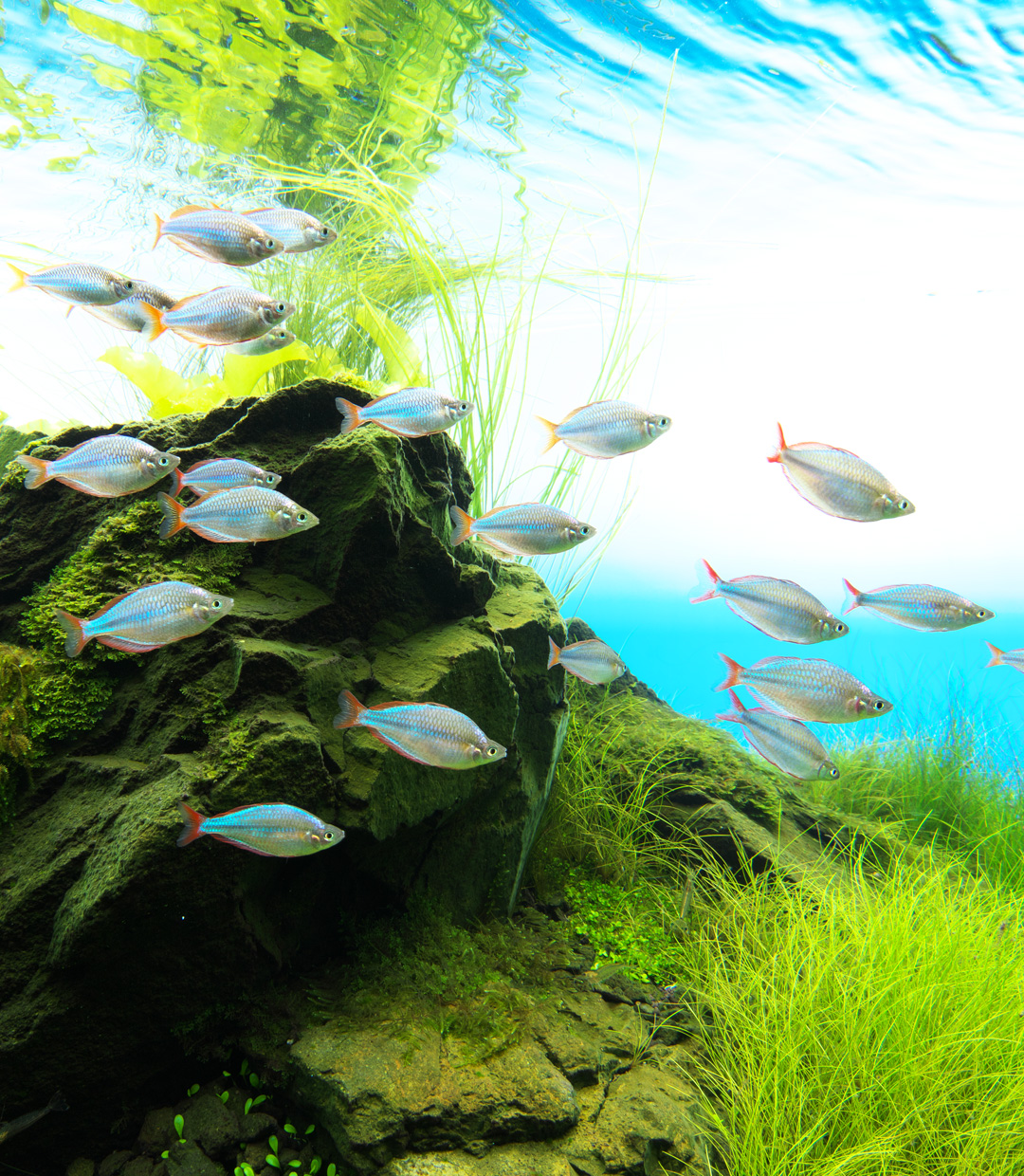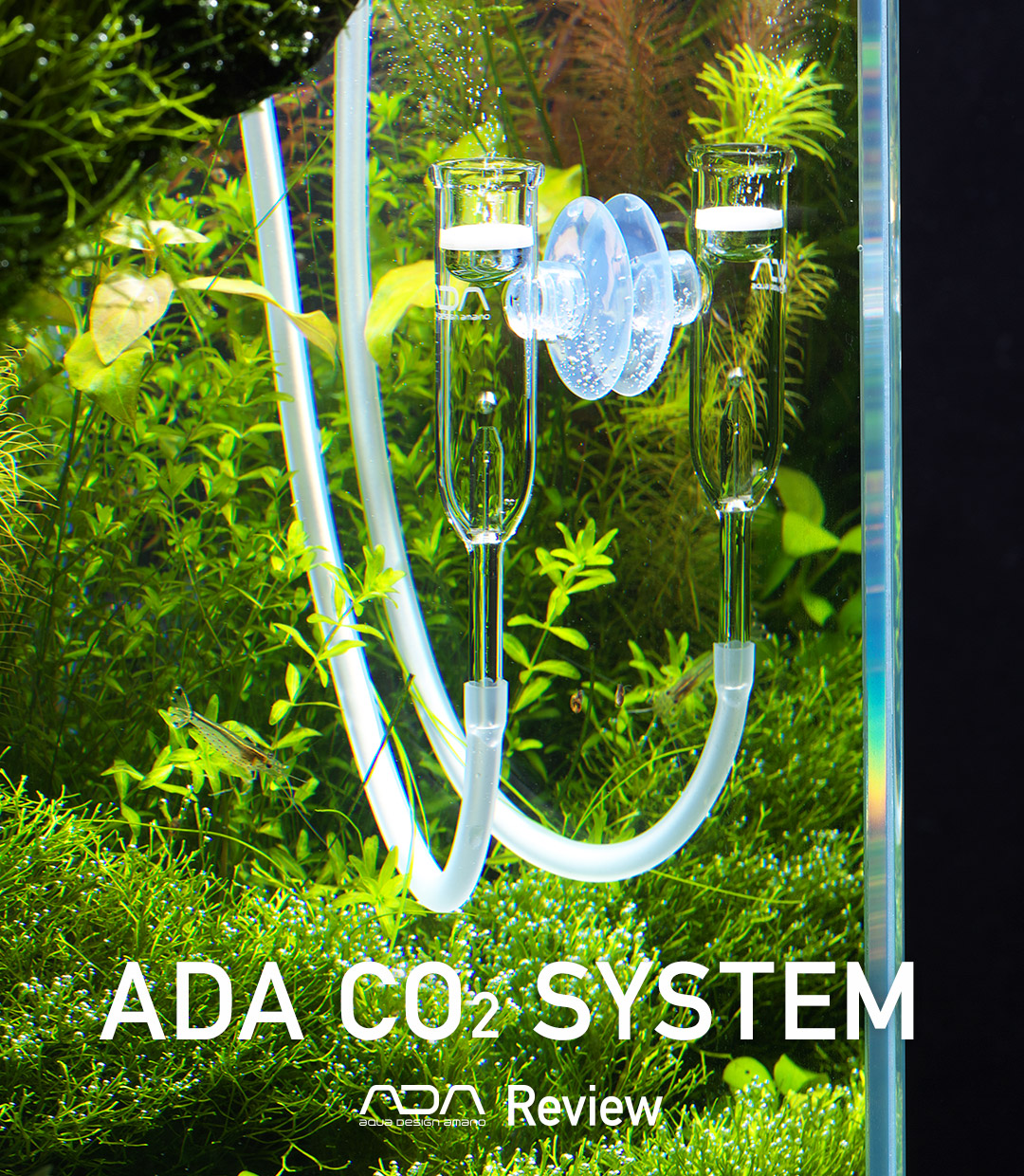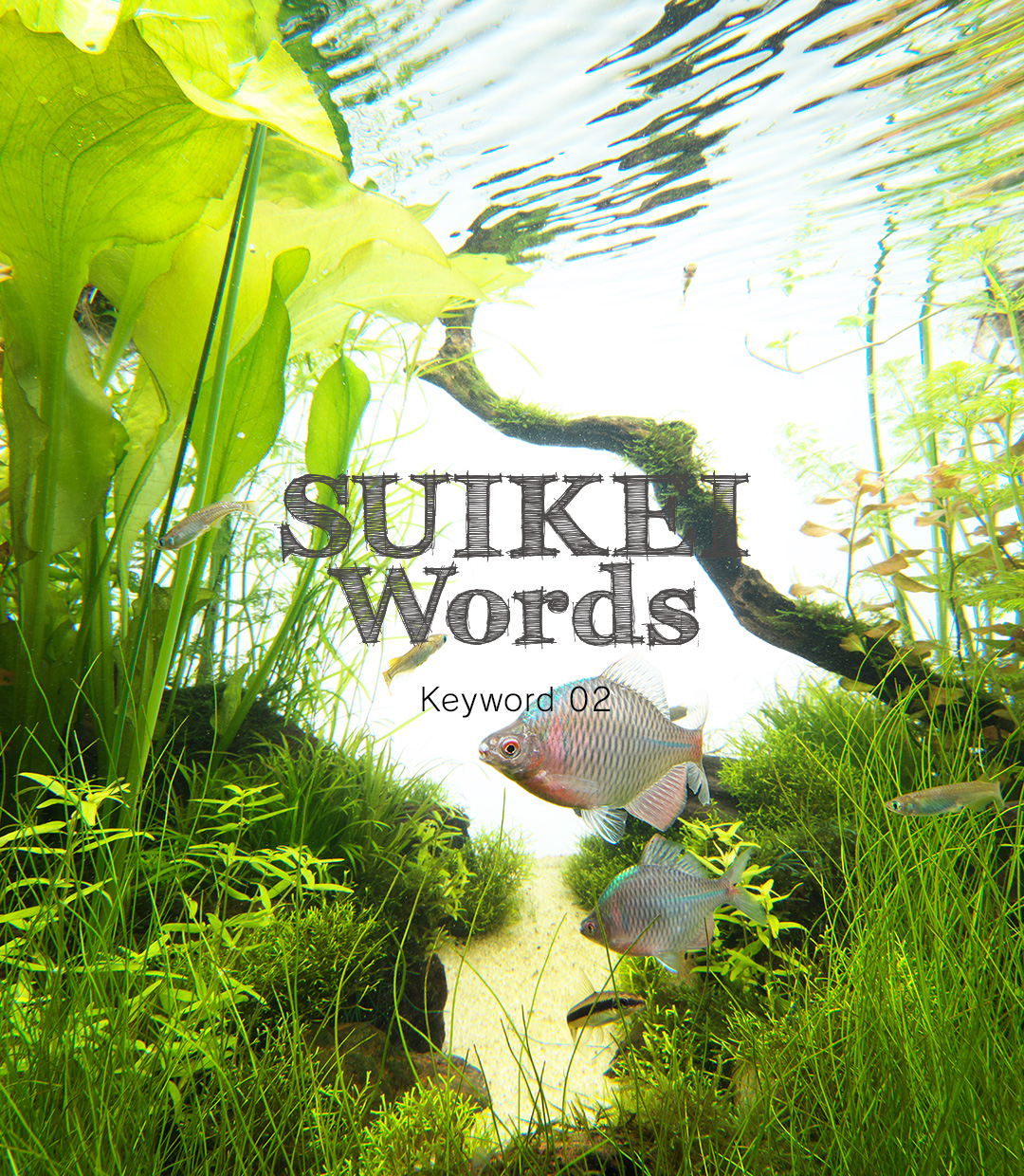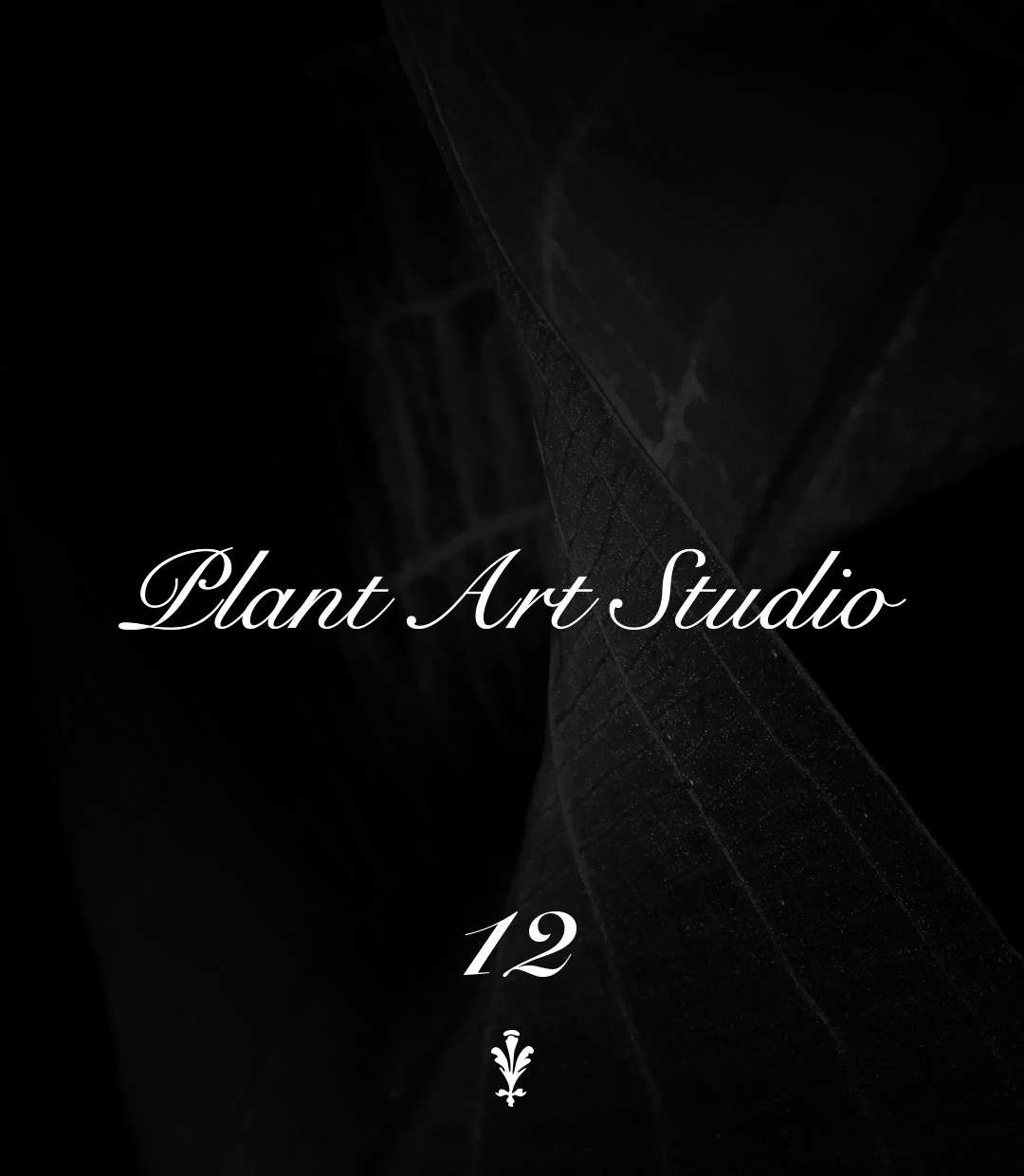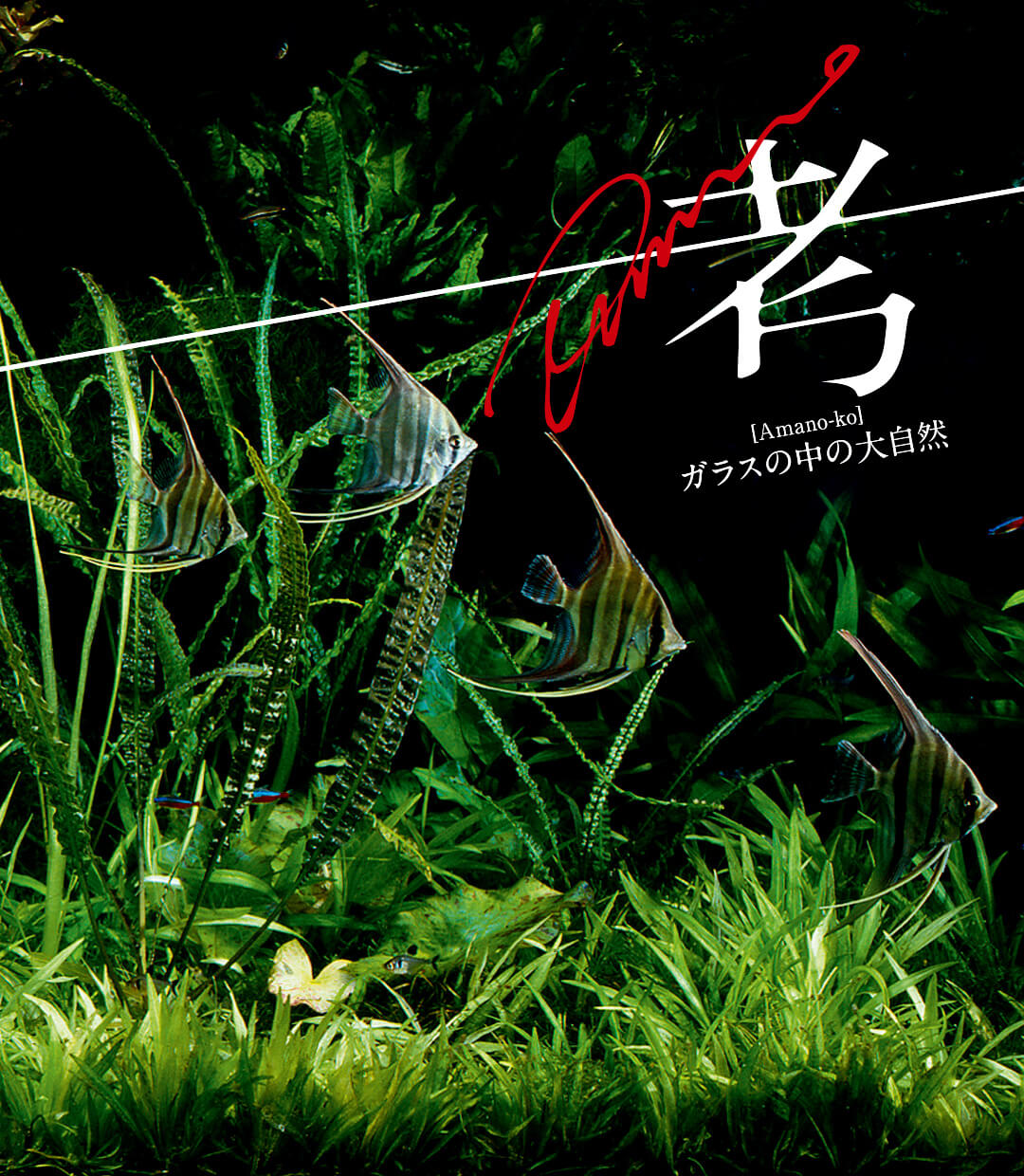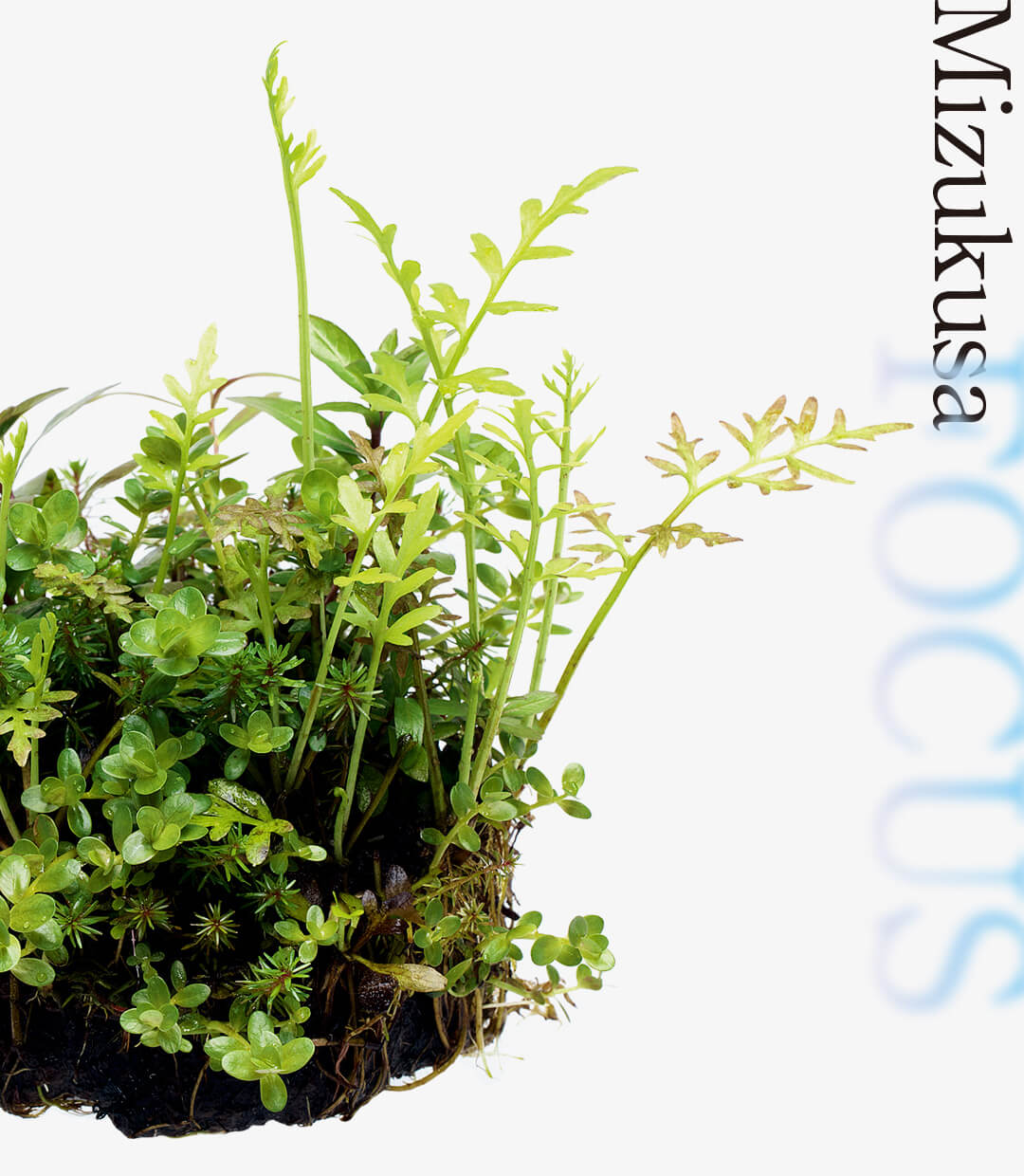ADA Review – ADA CO2 SYSTEM –
Improving photosynthesis by CO2 injection
CO2 injection using ADA CO2 Advanced System – Forest is the way to go to enjoy Nature Aquarium, filled with thriving aquatic plants. Its benefits are demonstrated in the creation of oxygen produced during photosynthesis.
CO2 injection using ADA CO2 Advanced System – Forest is the way to go to enjoy Nature Aquarium, filled with thriving aquatic plants. Its benefits are demonstrated in the creation of oxygen produced during photosynthesis.
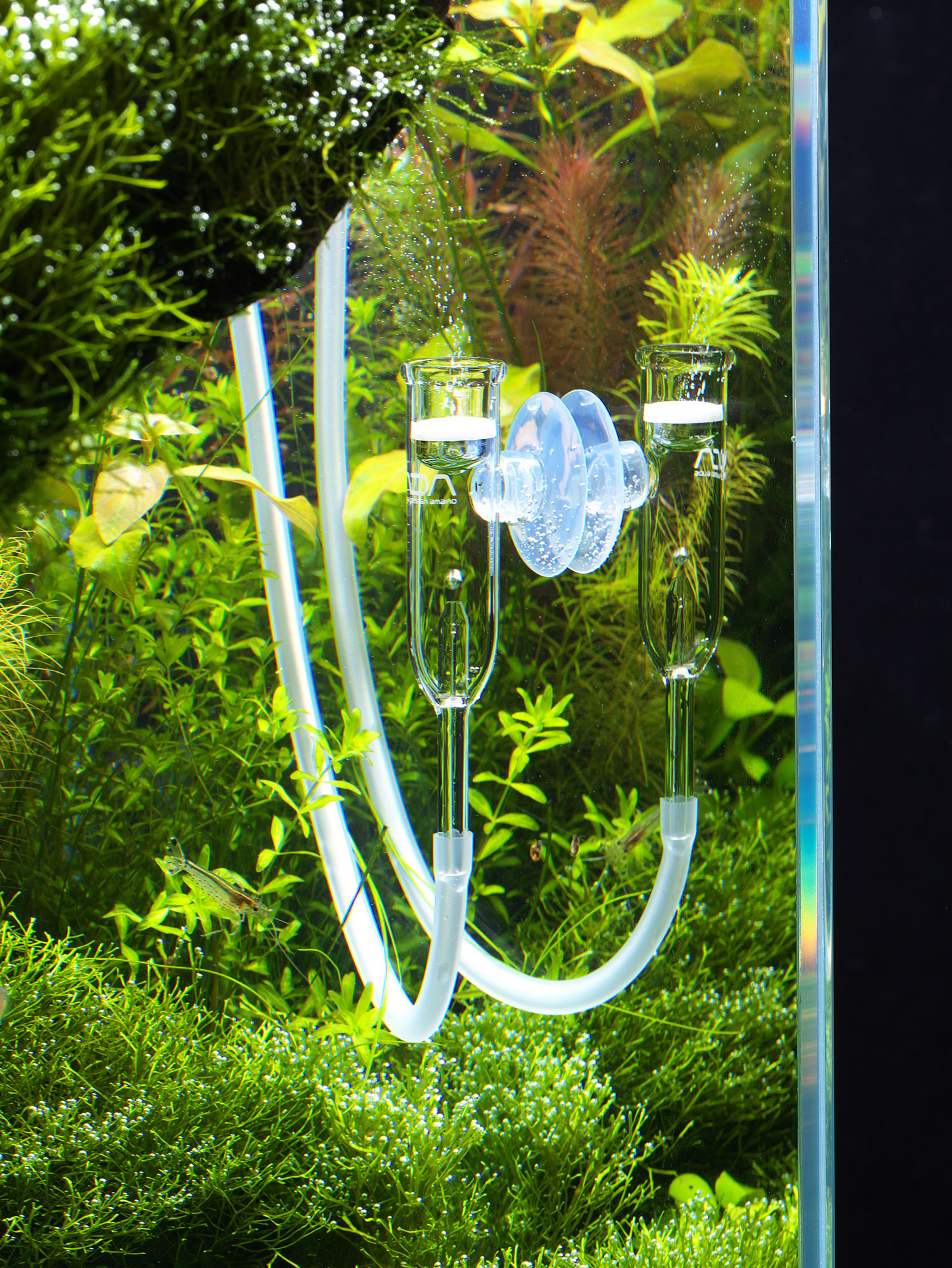
With CO2 injection, the balance of light quantity is the key
The photosynthetic process of plants, which controls their growth, requires an adequate amount of light, because CO2 injection alone does not promote the process. So, when installing a W60cm aquarium tank, it is most effective to use a CO2 injection system combined with AQUASKY RGB 60.
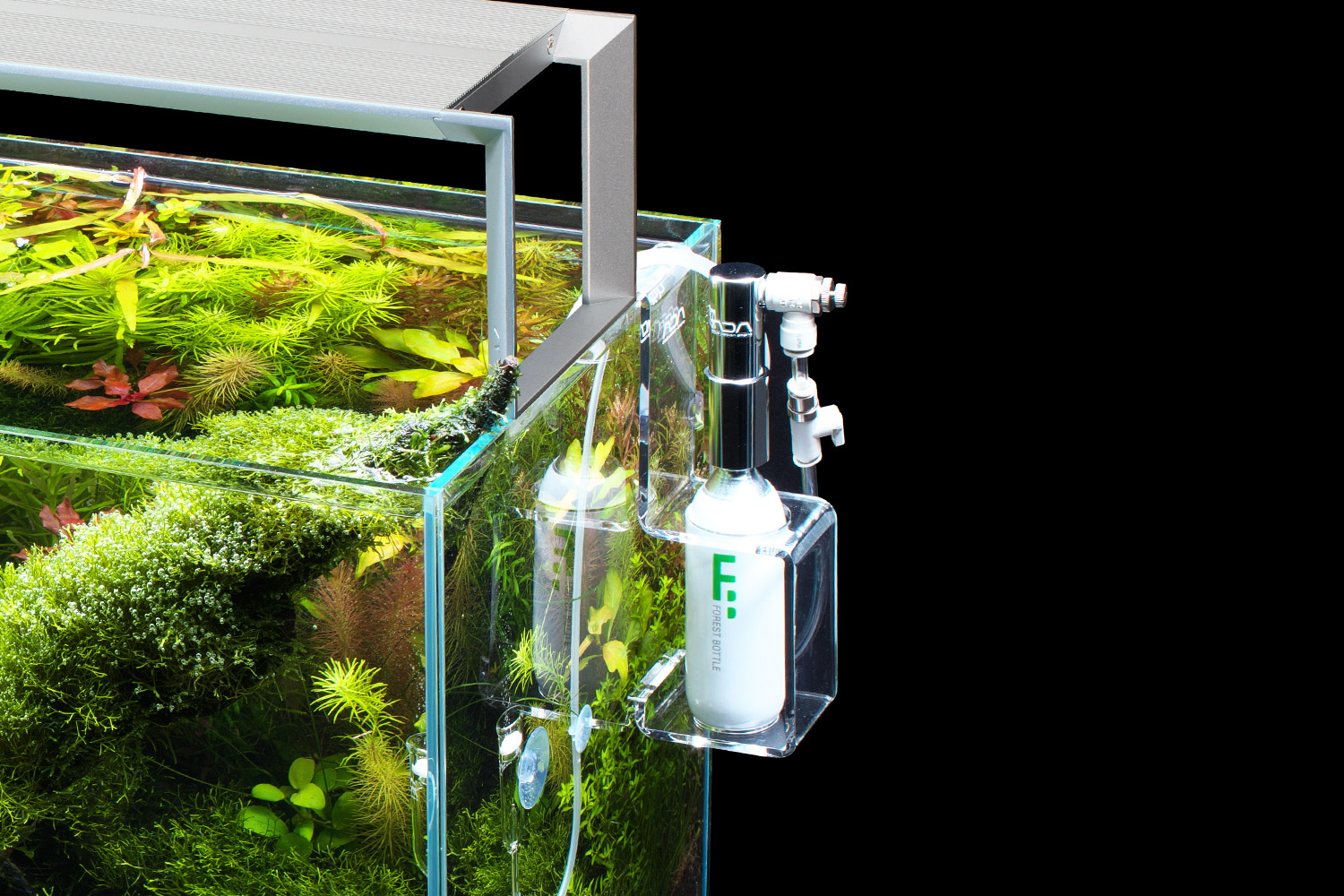
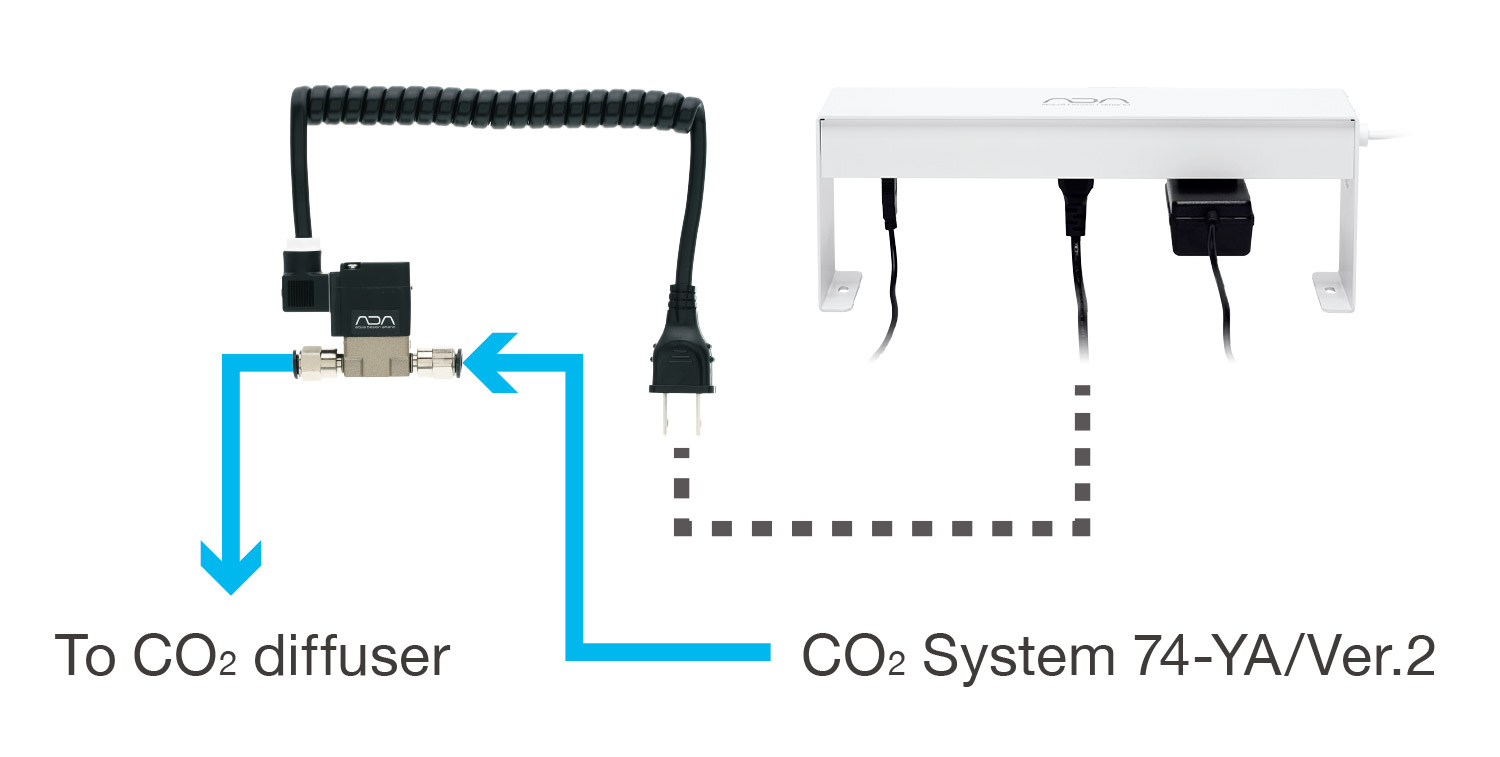
Automatic management by Power Cord S-70 and EL Valve
CO2 injection can be automatically controlled in accordance with ON/OFF of the light by installing a system like the one shown above.
CO2 injection can be automatically controlled in accordance with ON/OFF of the light by installing a system like the one shown above.
Advanced System – Forest contains all you need for CO2 injection
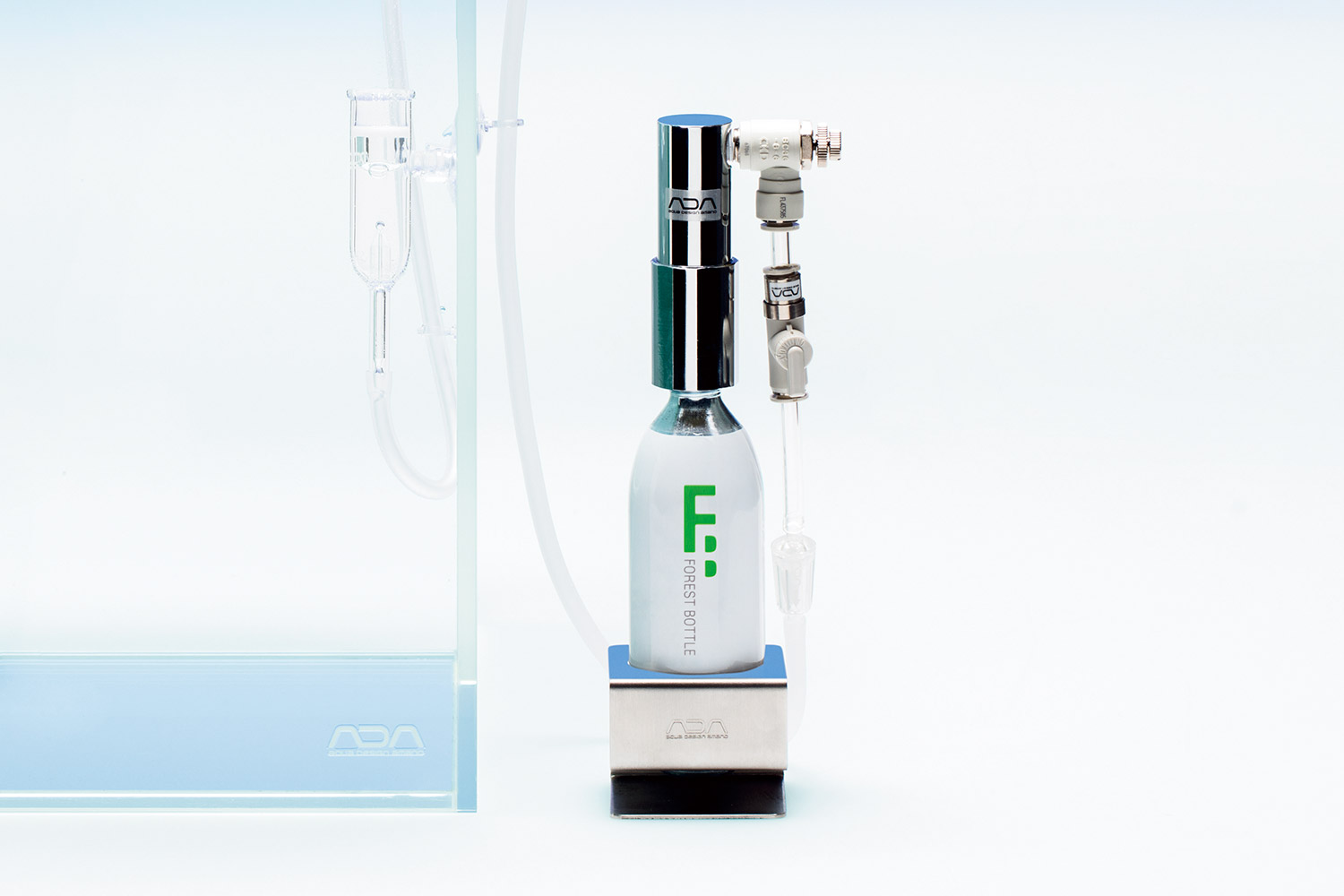
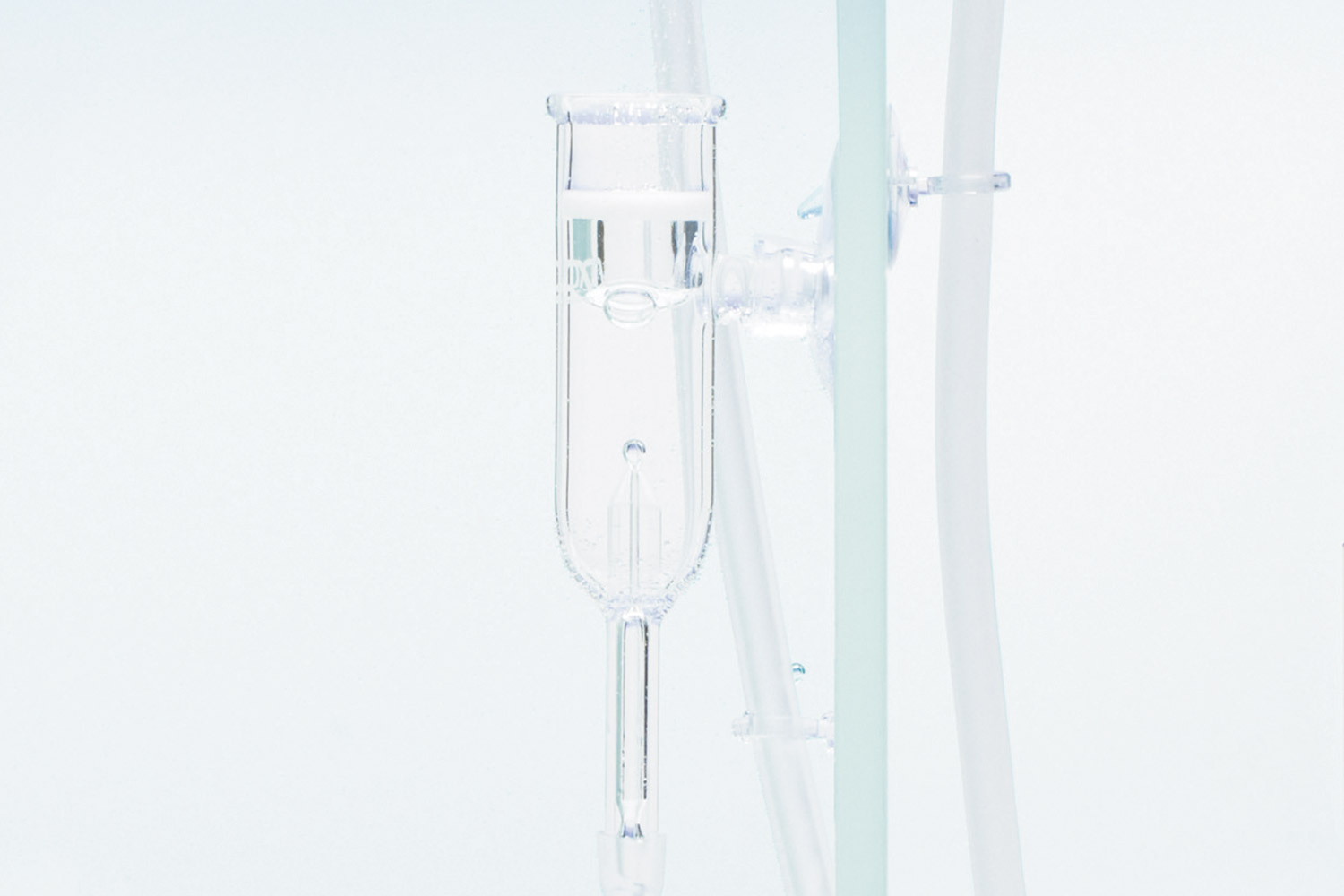
Start at one bubble per second
You can keep track of the CO2 amount to be added by counting bubbles formed in the Pollen Glass. The basic idea is to start adding CO2 at one bubble per second and gradually increase the amount according to the plant growth.
You can keep track of the CO2 amount to be added by counting bubbles formed in the Pollen Glass. The basic idea is to start adding CO2 at one bubble per second and gradually increase the amount according to the plant growth.
Changes in photosynthetic activity associated with CO2 injection
CO2 is turned on when the light is on in the morning, and turned off when the light is off at night. A good rule of thumb, is to provide a regular CO2 supply for roughly 8 hours daily.
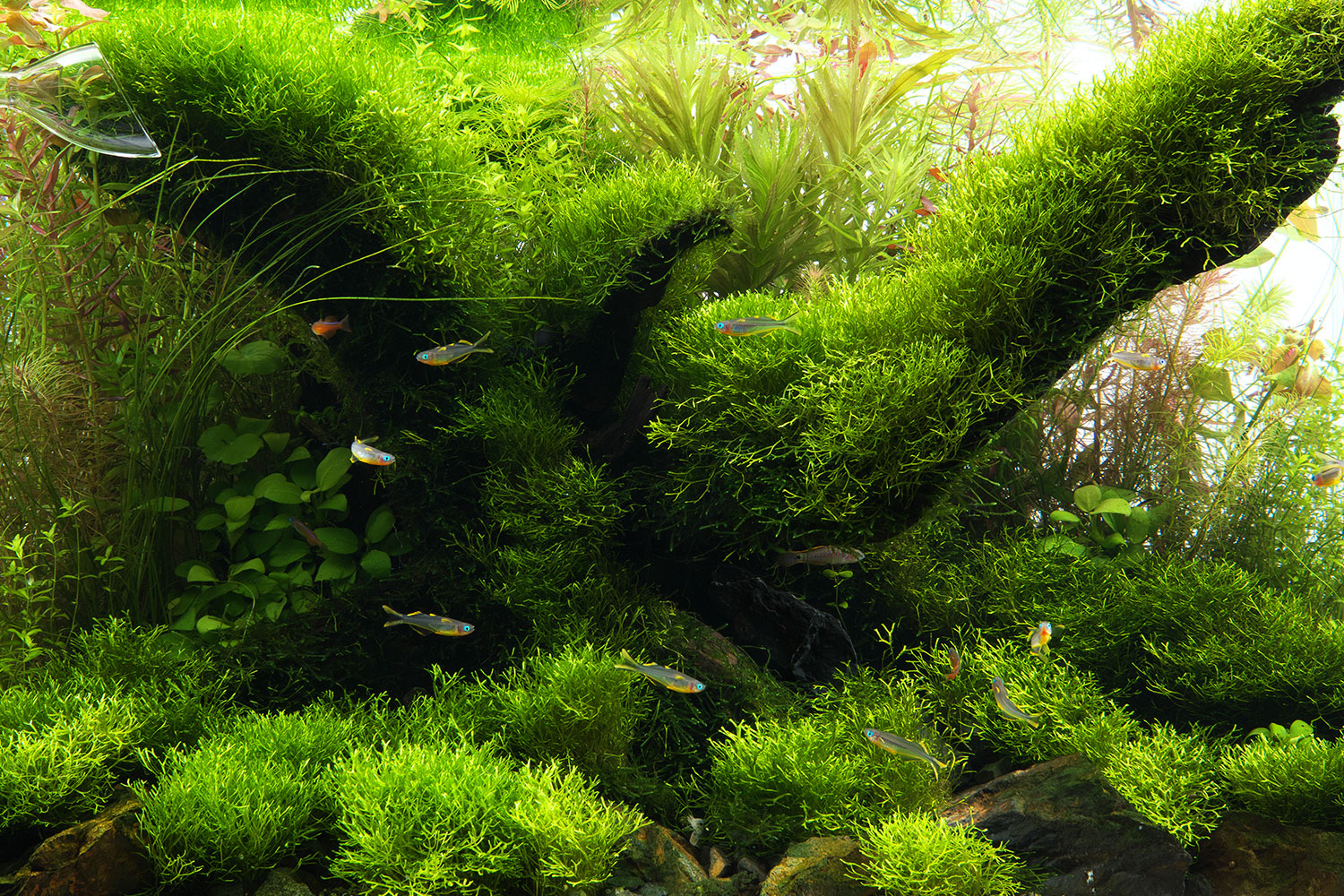
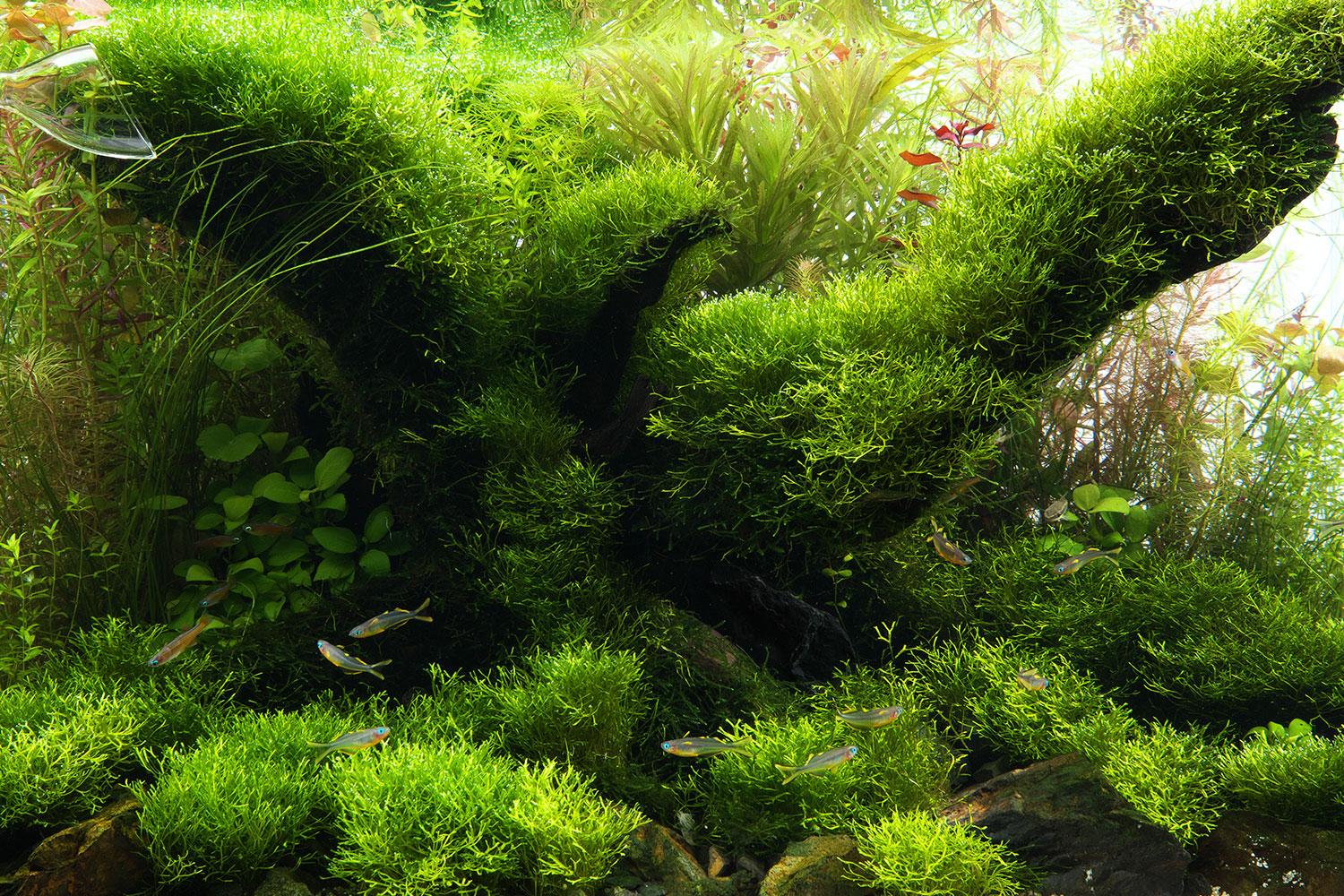
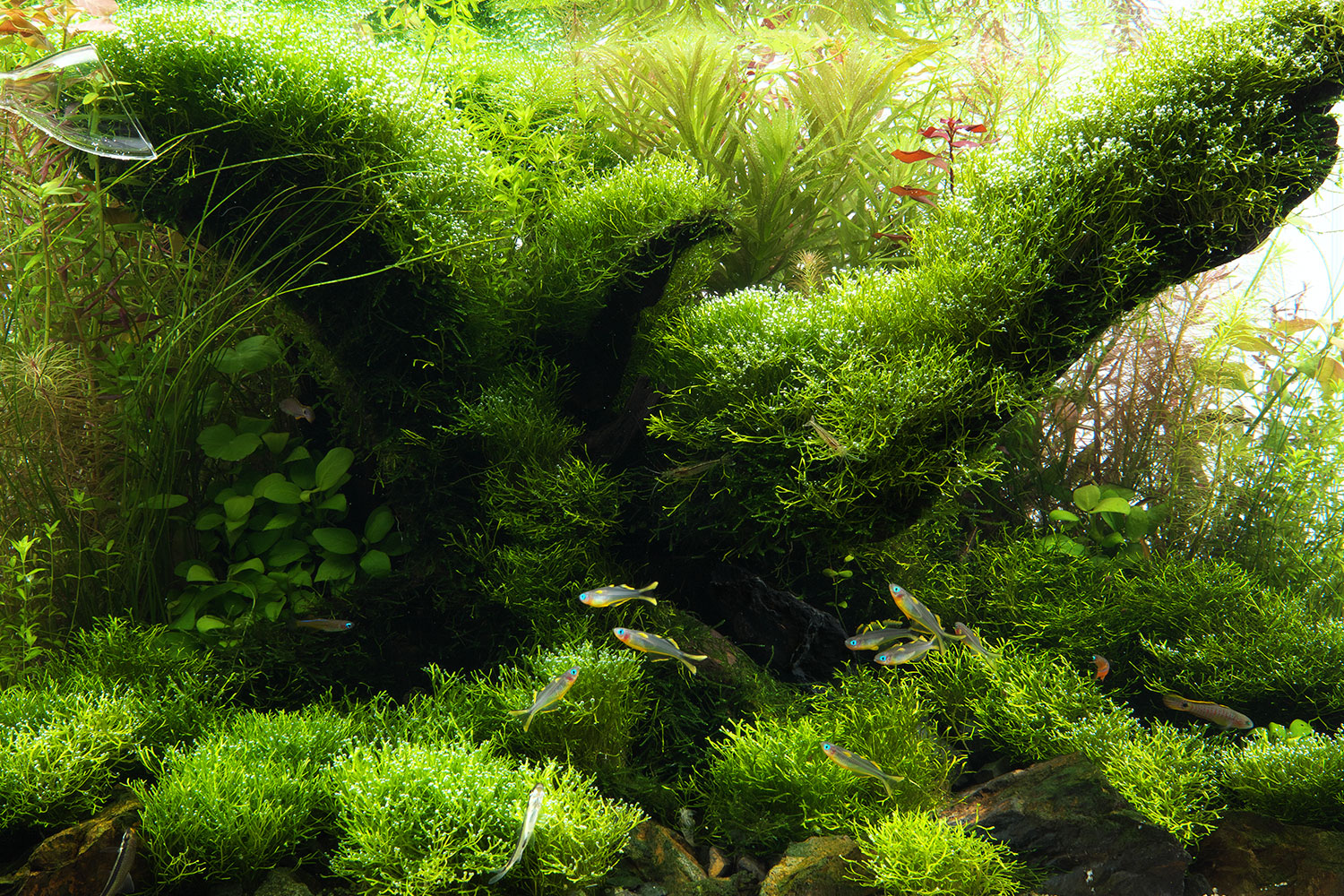
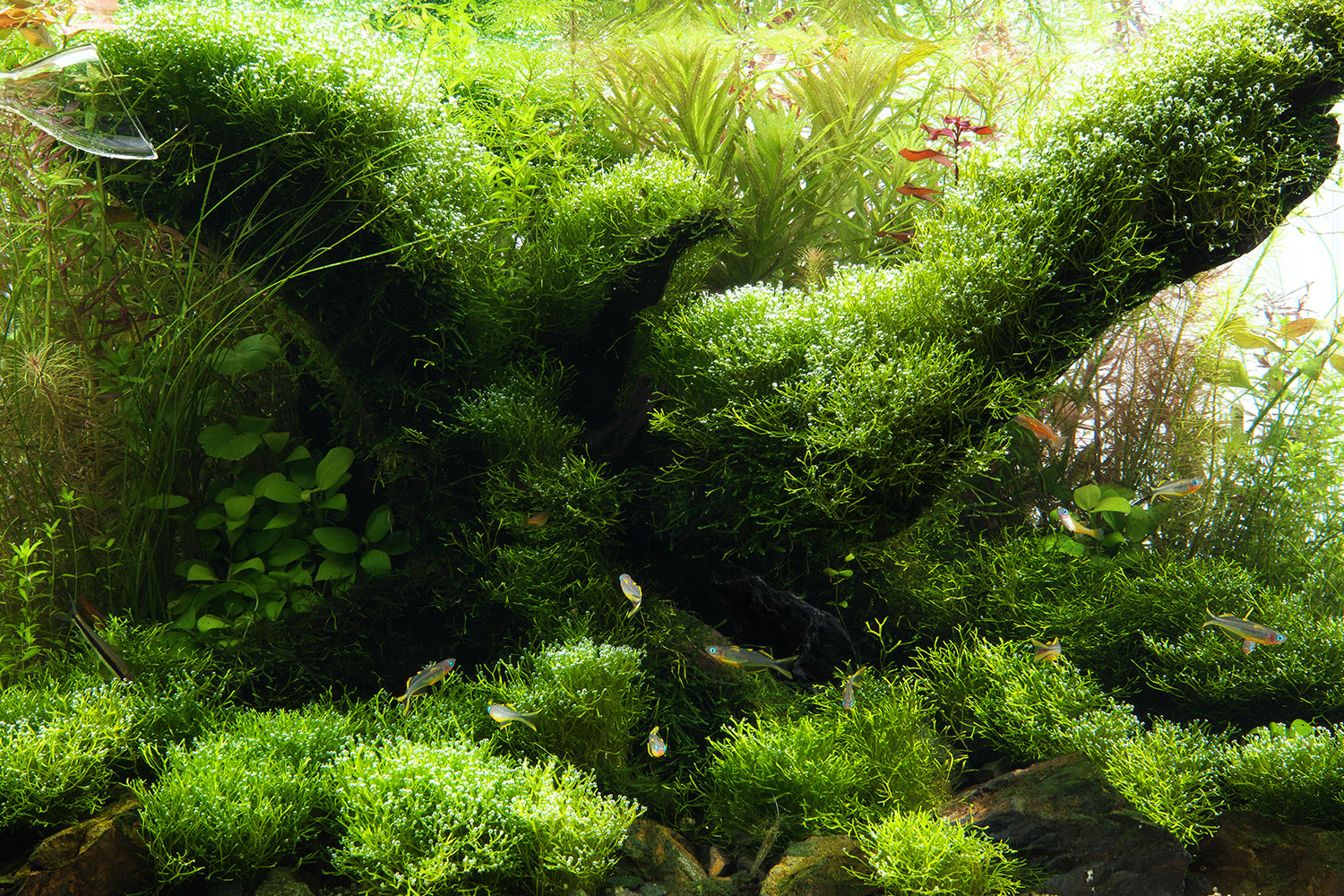
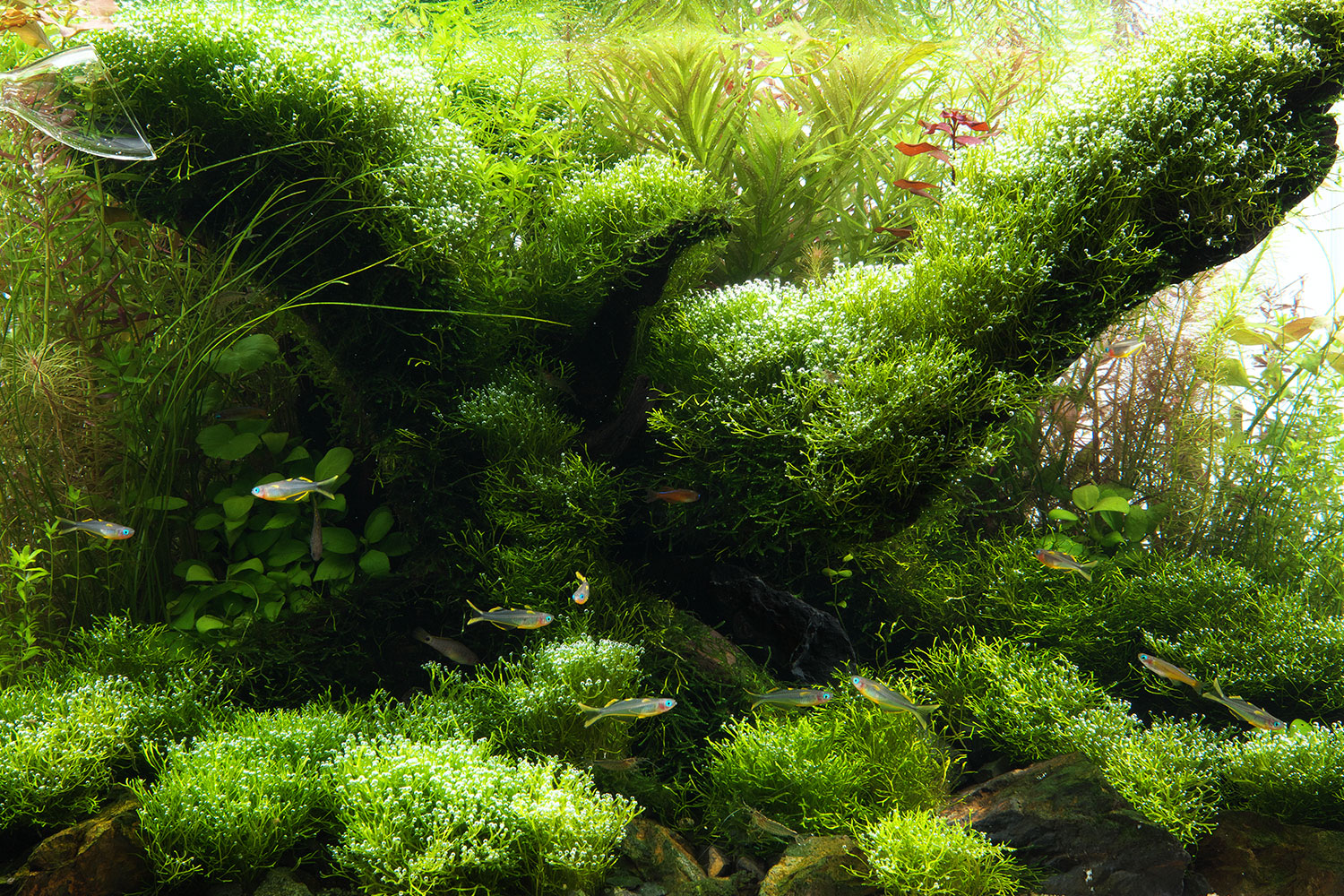
With a sufficient amount of light, oxygen bubbles produced during photosynthesis are rapidly observed in a tank where CO2 is properly added, starting after the noon hour when photosynthetic activity is at its peak. You can see how the bubbles appear on Riccia over time in the above photos, which were taken every 2 hours. The oxygen here is consumed by fish and microorganisms for respiration, and as a result a living cycle is established in the tank.
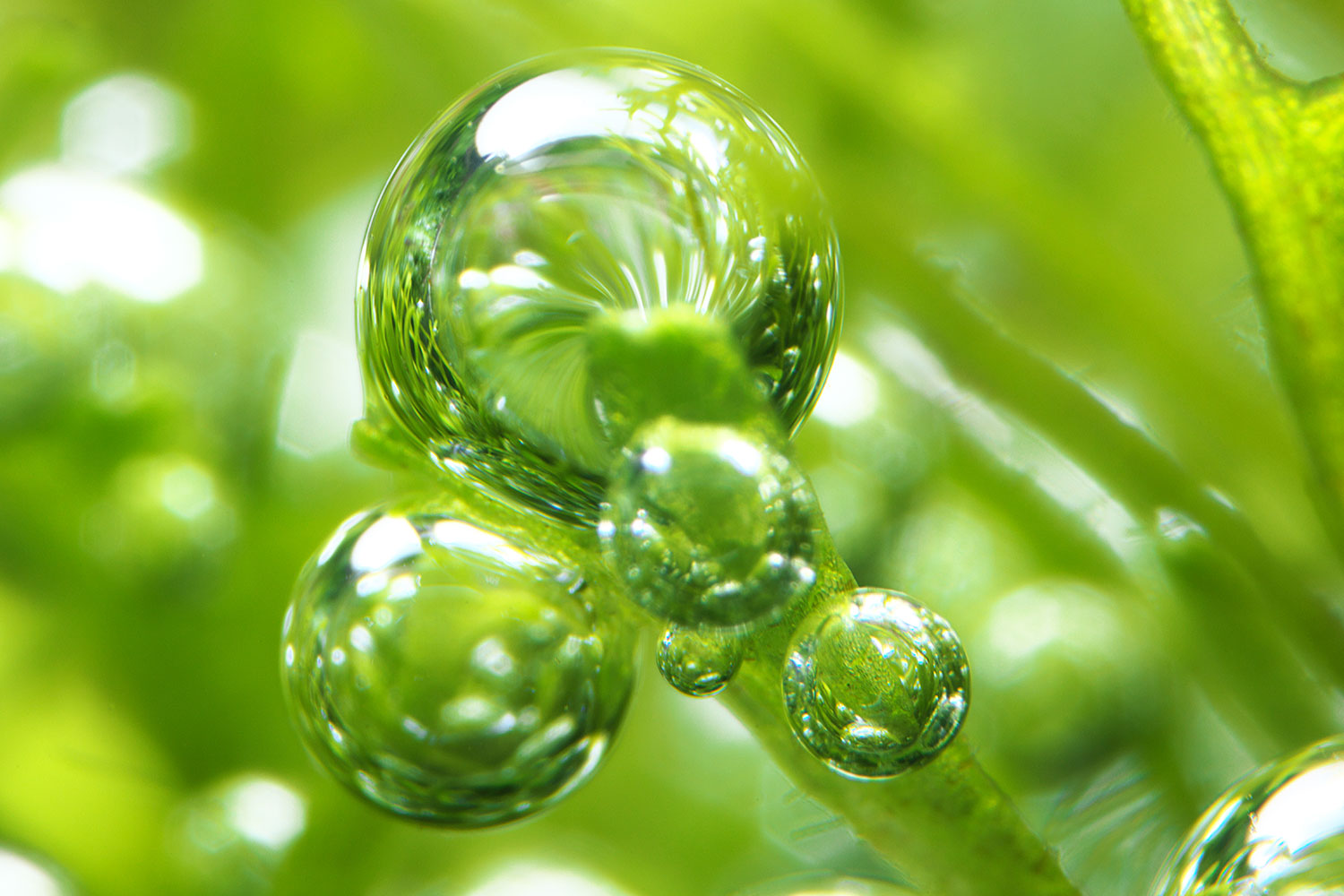
Oxygen as a key for healthy conditions
Aquatic plants release oxygen through photosynthesis when they grow in a healthy environment, where the equilibrium of contributing factors is found. This is particularly noticeable with BIO Mizukusa-no-Mori Riccia fluitans.
Aquatic plants release oxygen through photosynthesis when they grow in a healthy environment, where the equilibrium of contributing factors is found. This is particularly noticeable with BIO Mizukusa-no-Mori Riccia fluitans.
An aquarium environment supported by plant photosynthesis
Nature Aquarium is an aquascaping style which recreates the beauty of nature and an ecosystem in aquariums. Aquatic plants thrive as carrying out photosynthesis and providing oxygen to fish, shrimp and microorganisms. Even in a tiny aquarium tank, the interrelationship among the living organisms who live there takes place. Aquatic plants play a leading role in such a relationship because oxygen, an essential element of all vital activities, is supplied by plant photosynthesis enhanced by CO2 injection.
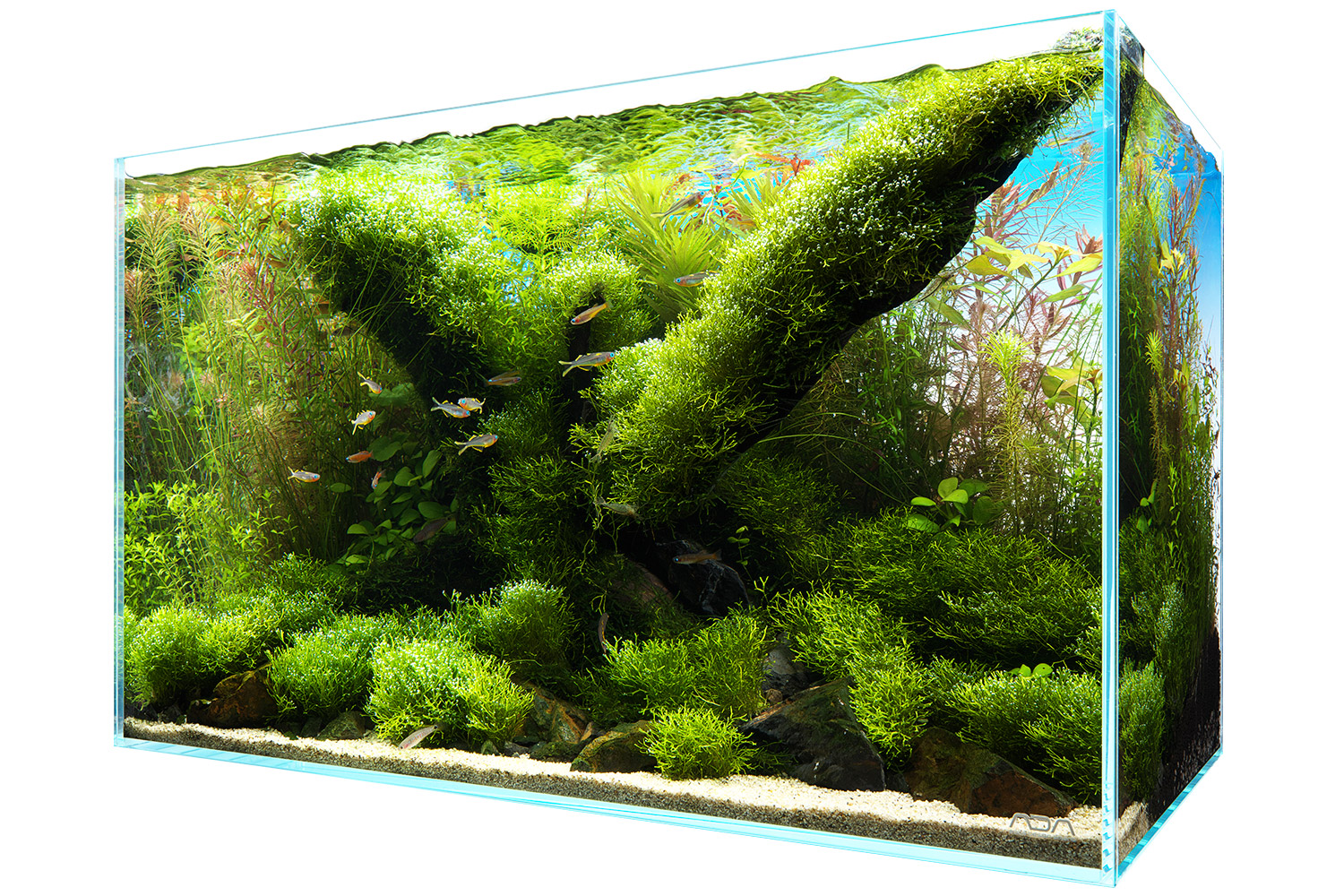
DATA
Aquarium: Cube Garden W60×D30×H36(cm), Metal Cabinet 60 (Silver), CO2 Advanced System Forest,
Light Screen 60, NA Thermometer J-06WH
Lighting: Aquasky RGB x 1, turned on for 8.5 hours per day
Filter: Super Jet Filter ES-600, Lily Pipe P-2, New Lily Pipe V-3
Time Control: Power Cord S-70
Material: Horn Wood, Sansui Stone
Substrate: Aqua Soil – Amazonia Ver.2, Power Sand Basic, Bacter 100, Clear Super, Tourmaline BC
CO2: Pollen Glass EZ, 3 bubbles per second
Aeration: 15.5 hours after the light is turned off using Lily Pipe P-2
Additives: Brighty K, Green Brighty Mineral, Green Brighty Iron, Green Brighty Nitrogen, ECA Plus
Water change: 1/3 once a week
Water quality: Temperature: 25ºC; pH: 6.6; TH: 50 mg/l
Plant
Wabi-Kusa Stemmed Plants MIX
Wabi-Kusa Hemianthus micranthemoides
BIO Mizukusa no Mori Riccia fluitans
Eriocaulon sp.
Anubias barteri var. nana ‘Golden’
Fish
Pseudomugil furcatus
Pseudomugil sp. ‘Timika’
Tateurndina ocellicauda
Crossocheilus oblongus
Otocinclus sp.
Caridina multidentata
Shooting date: June 23rd, 2020(ADA)
Creator: Yusuke Homma
ⒸAQUA DESIGN AMANO
Aquarium: Cube Garden W60×D30×H36(cm), Metal Cabinet 60 (Silver), CO2 Advanced System Forest,
Light Screen 60, NA Thermometer J-06WH
Lighting: Aquasky RGB x 1, turned on for 8.5 hours per day
Filter: Super Jet Filter ES-600, Lily Pipe P-2, New Lily Pipe V-3
Time Control: Power Cord S-70
Material: Horn Wood, Sansui Stone
Substrate: Aqua Soil – Amazonia Ver.2, Power Sand Basic, Bacter 100, Clear Super, Tourmaline BC
CO2: Pollen Glass EZ, 3 bubbles per second
Aeration: 15.5 hours after the light is turned off using Lily Pipe P-2
Additives: Brighty K, Green Brighty Mineral, Green Brighty Iron, Green Brighty Nitrogen, ECA Plus
Water change: 1/3 once a week
Water quality: Temperature: 25ºC; pH: 6.6; TH: 50 mg/l
Plant
Wabi-Kusa Stemmed Plants MIX
Wabi-Kusa Hemianthus micranthemoides
BIO Mizukusa no Mori Riccia fluitans
Eriocaulon sp.
Anubias barteri var. nana ‘Golden’
Fish
Pseudomugil furcatus
Pseudomugil sp. ‘Timika’
Tateurndina ocellicauda
Crossocheilus oblongus
Otocinclus sp.
Caridina multidentata
Shooting date: June 23rd, 2020(ADA)
Creator: Yusuke Homma
ⒸAQUA DESIGN AMANO
